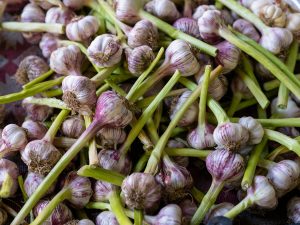Food Presentation: Turning Everyday Meals into Art
Have you ever wondered why some meals look so much more appetizing than others? The secret behind mouth-watering dishes lies in food presentation. It’s not just the taste that matters, but also how the food is presented on the plate. Food presentation is an art that can enhance the dining experience and make even the simplest meals look like a work of art. From restaurants to home-cooked meals, food presentation plays a crucial role in making the food visually appealing. In this article, we will explore the art of food presentation and how you can turn your everyday meals into edible art.
Understanding Food Presentation
Food presentation is the art of arranging and decorating food in an aesthetically pleasing manner. It involves not just placing food on a plate, but also paying attention to the colors, textures, and overall layout. Food presentation is an integral part of cooking because it can affect how the food is perceived by the diners. In fact, studies have shown that the way food is presented can influence how much people enjoy their meals and how much they are willing to pay for it. So, whether you’re a professional chef or a home cook, knowing how to present food can elevate your culinary skills.
The Elements of Food Presentation
There are various elements that go into creating a visually appealing food presentation. Here are some key elements you should keep in mind while plating your meals:
Color
Color is an essential element of food presentation. The food colors should be vibrant, and the dish must have a balance of different colors. It is recommended to use a variety of colors rather than sticking to just one or two. Different colors not only make the food look more attractive but also add to the nutritional value of the meal. Incorporating colorful fruits and vegetables is an easy way to add more color to your dishes.
Texture
The texture of the food is also significant in food presentation. It adds dimension and visual interest to the dish. Contrasting textures can make a meal look more appealing. This can be achieved by using crunchy ingredients like nuts or crispy vegetables alongside soft and creamy elements like mashed potatoes or purees.
Balance
Balance is crucial in food presentation. It ensures that the dish is visually appealing and not messy to look at. A well-balanced dish should have a mix of different ingredients in appropriate proportions. For example, a plate with too much greenery or too many sides can make the dish look unappealing. So, it’s important to strike a balance between the various elements on the plate.
How to Turn Everyday Meals into Art
Now that we have understood the key elements of food presentation, let’s explore how you can apply them to turn your everyday meals into art:
Choose the Right Plate
The first step in food presentation is selecting the right plate. The size, shape, and color of the plate can affect the overall look of the dish. Generally, white plates provide a clean canvas for the food to stand out. However, don’t be afraid to experiment with different colors and shapes. Just make sure that the plate is big enough to hold all the components of the dish without overcrowding it.
Add Garnishes
Garnishes can add zest and a pop of color to your dishes. They can also complement the flavors of the dish. Fresh herbs, citrus slices, or edible flowers can all make great garnishes. Just make sure they are edible and enhance the dish, not just for decoration.
Get Creative with Food Arrangement
How you arrange the food on the plate can make all the difference. Instead of simply piling the food in the center of the plate, try to create layers and height. Use different shaped molds to create interesting shapes or invest in food decorating tools like piping bags for sauces and dressings.
Add Some Sauce
Sauces not only add flavor but also provide a beautiful backdrop for the food. You can drizzle sauces on the plate or use them to make designs. Just make sure that the sauce complements the flavors of the dish and doesn’t overpower it.
Pay Attention to Portion Size
Portion size is crucial in food presentation. Resist the temptation to overload the plate with too much food. Leave enough empty space on the plate to make the dish look balanced and appealing. Also, make sure that the portions are consistent to give the dish a uniform and polished look.
With these tips in mind, you can transform your everyday meals into visually appealing and appetizing dishes that look like art. Remember, food presentation is all about experimenting and finding what works best for you. So, don’t be afraid to get creative and have fun while plating your meals. With a little bit of practice, you’ll be turning food into art in no time!
In Conclusion
Food presentation is an essential aspect of cooking that can take your meals to the next level. By understanding the elements of food presentation and implementing a few techniques, you can make your everyday meals look like a masterpiece. Remember, food presentation is not just about style, but also about making the dining experience more enjoyable. So, take some extra time to plate your meals beautifully and impress your friends and family with your culinary skills.











